Suma
Leaky Gut Syndrome – All You Need to Know

Leaky Gut Syndrome. Virtually everyone seems to be talking about it. And the image that it conjures up in the mind isn’t pretty. A gut that leaks?
It’s not so much that the “gut” as we know it leaks. It’s when the permeability in the intestinal walls increases, or in medical terms, intestinal hyperpermeability. This could develop over years without our knowing it, where the intestinal walls can develop perforations, allowing digestive juices such as acids to “leak” through the intestinal walls into the bloodstream.
Bear in mind that this isn’t strictly a diagnosis – it is considered a medical possibility when there is chronic evidence of digestive issues like bloating, gas, cramps, constipation, diarrhoea, GERD, food sensitivities and intolerances, and several associated symptoms. This could be brought on by years of wrong food habits, or unknown food allergies (check out the this post on the elimination dietthat can be a good first step to figuring out trigger foods). Even stress can take its toll on a leaky gut. Medically, the leaky gut syndrome is not a definitive term. It is more of a catch-all term to encompass common digestive issues like the ones listed above.
When you’re chronically constipated, you know a headache or that all-pervading irritability will accompany it. When your bowel moments aren’t regular, repetitive straining can lead to hernia or piles.That ache deep in your bones that you feel, or the unexplained musculoskeletal pain like fibromyalgia? Leaky gut syndrome could be to blame. What essentially happens is that the mucous walls of the intestines become porous because of years of unawareness. Because of this, not only do acids and food matter leak into the bloodstream. Pathogens and toxins also make their way through. The lining of the gut is one of the body’s key immune systems, acting as a wall between what the body needs and what it doesn’t. A healthy gut helps to get rid of the waste without affecting the bloodstream. Unfortunately, a leaky gut does not.
Leaky Gut Syndrome Factoids
- Causes: A diet heavy in processed foods, gluten, refined carbs, and sugar; unhealthy eating habits and lack of whole foods; intake of fluids during meals; inadequate chewing; addiction to gut irritants like alcohol and caffeine; improperly cleaned food; chronic stress; an imbalanced diet that doesn’t comprise of clean protein and good fats; pesticides, mould and mycotoxins in food;
- Secondary Causes: For decades, the answer to acid reflux or bloating has been to pop an antacid. It is no longer advisable, say doctors. Besides, research now shows that dependency on antacids (scientifically called PPIs or Proton Pump Inhibitors) and Alka-Seltzer can also cause or exacerbate a leaky gut. Perhaps, these are one of the greatest contributing factors to a leaky gut. Since they disturb the pH balance of the intestine, they can make the stomach more acidic. Also, chronic stress gets a bad rap (as it should). Feeling like you are constantly under a cloud and worrying about it can also wreak havoc on your gut lining. Also, an affinity for NSAIDs like ibuprofen or aspirin every time you have a headache or are under the weather. Unhealthy gums and gingivitis – these allow bacteria to enter the bloodstream
- Associated digestive disorders: Celiac disease; Irritable Bowel Syndrome; Crohn’s Disease or Ulcerative Colitis; Lactose Intolerance; Carb Intolerance: Gluten Intolerance – most of these conditions, I have covered in our post on anti-inflammatory diets.
- Common symptoms: Bloating; gas; GERD; hiatal hernia; constipation; diarrhoea; cramps; food intolerances
- Secondary symptoms: Fibromyalgia; irritability; auto-immune diseases like lupus, alopecia, CFS, diabetes, psoriasis, etc.; musculoskeletal issues like arthritis, chronic joint pain; memory deficiency; chronic candida infections.
Recommended Remedies
Instead of depending on medication, doctors and physicians now recommend following a nutrition and lifestyle protocol that falls in line with anti-inflammatory diets. The drill:
- A wholesome diet rich in whole grains, greens, vegetables, fruits, healthy fats like olive oil, nuts and seeds. In short, a meal you can fix yourself without adding any ingredient that comes pre-packaged or in a bottle.
- Drink water a half hour before or after meals, never with. This tends to dilute your digestive issues while eating, making your digestive system have to work doubly hard, thereby causing a strain on the intestinal walls.
- Practice relaxation techniques like meditation or nature walks regularly. Or walk your dog.
- Seek a world outside your head that doesn’t make you feel like you have to think or work too hard. Maybe a passion project that is only for you, something for creative release.
- Identify trigger foods and slowly eliminate them from your diet.
- Adopt a healthy lifestyle for life.
Elimination Diet Plan: Five Things to Consider

I’ve already covered what the elimination diet is all about and may be considering an elimination diet plan. As a quick recap, here is why the elimination diet is popular.
- It helps target specific intolerances and allergies. By the process of elimination, trigger foods, allergens, and any ingredient that causes discomfort is removed from the diet for a time period of 4-8 weeks. During this period, the body gets used to the fact it no longer needs to produce antibodies to counter the trigger food, and begins to heal itself internally.
- It helps clearly identify what agrees with your system and what does not. Sometimes, without knowing, we may have inundated our system with foods that wreak havoc internally. What we may have thought of as knee pain because it’s that time of the month, or a headache because of lack of sleep, can actually be a reaction to a certain food item that the body is actively resisting.
- It promotes reversal of chronic conditions owing to inflammation. When the body battles trigger foods or allergens, as a protective measure, it gets inflamed to prevent the food from harming us. Inflammation, if left unchecked, has been found to be the root cause of most chronic and auto-immune diseases, not the least of which are T2D, atherosclerosis, and fatty liver. In the simplest sense, this causes swelling in tissues and blood vessels, thereby preventing blood from flowing freely.
In light of this, you may want to consider the elimination diet plan. You might think back to those times when you had one or a few of the common symptoms of food intolerance: headaches, chronic fatigue, bronchitis, sinusitis, arthritis, lethargy, sluggishness, brain fog, diarrhoea, nausea, constipation, migraines. You know, all those petty little malaises that you take in your stride as a sometimes reaction. And you might already be making connections to some foods you know your system disagrees with. How will you go about bringing this elimination diet plan together? I’m here to throw some light. Follow this five step protocol to formulate your own customized elimination diet plan.
- Connect the dots between what you eat and how you feel in the next 24-48 hours. This is the first step to communicating with your body about its wellness. Maintain a food chart, and remember to be completely honest. There may be a food or ingredient that your taste buds love, but if your body complains in the next couple of days, then chances are it could be a trigger food. Food allergies sometimes announce themselves in childhood, and sometimes, can also develop much later in life. This could be because of the vastly different ways of growing food now as compared to fifty or hundred years ago. Agricultural practices back then weren’t heavily dependent on pesticides and fertilizers.
- Make a list of the common allergies and stick it on your fridge with a magnet. Eggs, shellfish, gluten, dairy, lactose, berries, nuts, caffeine, alcohol, certain fruits, legumes, lentils, mustard, cilantro. Every time you eat one of these ingredients, pay close attention to what your body is trying to tell you. It could start as micro reactions and might take a while to fully develop into a chronic reaction. Make a note of these reactions as well. Nothing is too silly to note.
- Now make a list of the food replacements that can step in during the time you are in the elimination phase: almond milk for milk, low-carb flours for gluten, flax seeds to replace eggs in your baking, decaffeinated coffee or herbal tea to deal with that afternoon slump, so on and so forth.
- Commit to the plan. If you will be eliminating trigger foods one by one, it will take an elaborate amount of planning and commitment. Your strategy should lead the process right from the outset. You can make a twelve month plan and eliminate foods one by one, and reintroduce as per the elimination diet protocol.
- Like with every other diet, no cheating. Even one single instance of cheating in a window for one trigger food will send you back to zero, and you will have to start all over again. Remember your commitment. It’s almost like a sorority pledge where you and your body are sorority sisters. You promise to have each other’s backs, and you stay with the program.
It is always helpful to consult a professional nutritionist or dietitian before you begin any new diet regimen. They will also be quicker to connect symptoms with allergens. And remember, like every other diet, the elimination diet is not a quick fix. It will likely require a change in your lifestyle for good. Good luck and keep us posted of your progress in the comments.
Elimination Diet: Say Goodbye to Trigger Foods
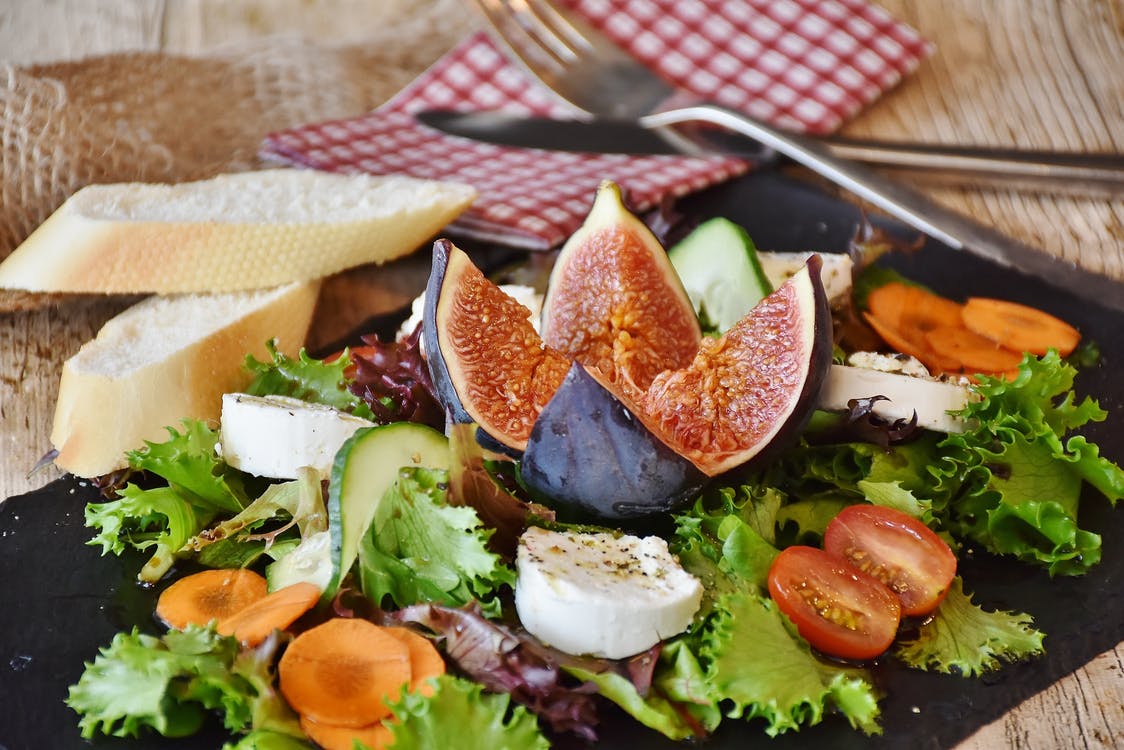
The latest “diet” doing the rounds is the Elimination Diet. The word “Diet” has always brought to mind all the foods you will have to give up for your health, and the Elimination Diet is no different. The key difference being that this diet has as its focus not weight loss, but an alleviation in symptoms that cause unpleasant health conditions and metabolic irregularities. Like they say, knowledge is everything. And now, as more and more people become health-conscious and self-aware, the elimination diet is becoming the go-to solution for everything from headaches to metabolic issues and seasonal allergies to chronic ailments.
So what exactly is the Elimination Diet? Simply put, this diet aims at eliminating trigger foods and allergens that cause adverse reactions in the first place, leading to inflammation inside the body and subsequent issues. While all people don’t necessarily suffer from ingesting these trigger foods, an elimination diet is probably the best solution if nothing else has worked for you.
Common Trigger Foods/Allergens
Not all foods cause food intolerances in everyone, but some signs are too obvious to ignore. For instance, gluten intolerance might seem more of a fad than an actual good reason to say no to gluten, but more and more people are being diagnosed with celiac disease and gluten intolerance than ever before. Perhaps there wasn’t enough scientific evidence/history to diagnose correctly twenty years ago, but gluten intolerance can bring on some severe responses because gluten-intolerant digestive systems can treat it as a hostile organism. Some of the other most common allergens are dairy, eggs, shellfish, sugar and simple sugars, tree nuts like almond and coconut, plant nuts like peanuts, alcohol, mustard, lentils, beans, and berries. Ingestion of these foods, if unaware of an inherent intolerance, can even lead to anaphylactic shock in some cases.
Some of the common side effects include chronic carb intolerance, bloating, constipation, diarrhoea, joint pain, lethargy, rashes, sleeplessness, general malaise, chronic inflammation, leading to a horde of conditions like type 2 diabetes, fatty liver, arthritis, respiratory illnesses, digestive irregularities like ulcerative colitis and irritable bowel syndrome, affinity for visceral fat, water retention, bloating, to mention just a few. Most common side effects are metabolic syndrome related issues like diabesity, chronic respiratory ailments, and chronic fatigue.
Elimination Diet: The How to and the When
The elimination diet is not a fad diet. If you suspect that your body is reacting adversely to certain trigger foods, but are unsure of what they might be, the elimination diet might well be helpful to you. How this works is when your body or system is constantly ingesting these foods, it produces anti-bodies in response, which in turn cause the adverse reaction. For the elimination diet to work, doctors recommend identifying possible triggers and depriving the body of that food for at least four to eight weeks so the body learns to not produce those anti-bodies. After a few weeks of not being subjected to trigger foods, you can reintroduce the food or ingredient in small quantities to see how your body reacts. You can do this for more than one food that you suspect, but your body will need a window of at least a few weeks to respond decisively. Some of the ways in which your body begins to heal itself is sustained weight loss, increase in insulin sensitivity, lower body fat percentage, fewer occurrences of headache and joint pain, reduced exposure to infections, etc.
Keep in mind that not all trigger foods and allergens bother everyone. Any adverse reaction that you note could be a one-time affair. Staying in intimate communication with your body is key here. Your body will always let you know when it is uncomfortable in any way. We tend to think of these as symptoms for which seek symptomatic treatment sometimes. But if such symptoms persist, then there is a good chance that it is on its way to becoming chronic, and could be triggered by an allergen. Try not to self-diagnose. Work with a nutritionist or a dietitian to figure out what could be triggering your body, and then carefully follow the protocol that she recommends. Make a plan – meal plans, shopping plans, weekly food lists, what have you. And then, most importantly, maintain a food chart, and keep an active record of how your body feels each day. You will be able to connect the dots between foods and reactions that way. This kind of a diet requires commitment and focus, but if you genuinely have food intolerances, it will be well worth it.
Om: Meaning and Its Divine Secrets
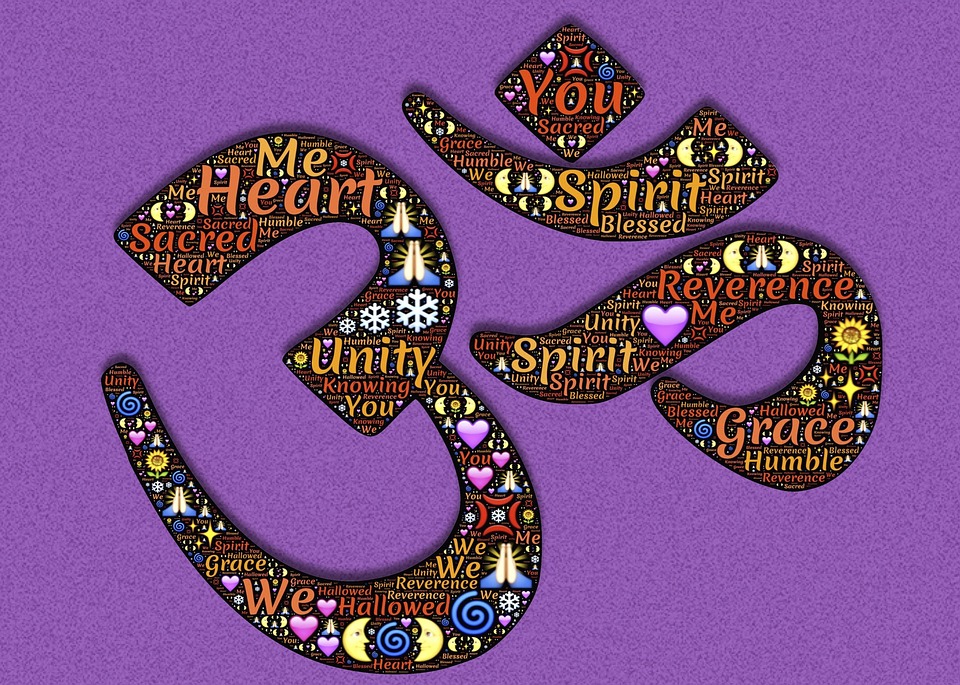
If you are into yoga or pranayama or meditation, chances are you will already have been introduced to Om. It is a spiritual symbol in the Hindu religion and has significance as a sacred symbol. You might not know that it is also a chant or a mantra that is prevalent in other faiths like Buddhism, Sikhism, and Jainism. The curious curl that you are familiar with is actually om as written in Sanskrit. Especially in Hinduism, Om is seen as one of the foundational symbols. Often found in the beginning of all the holy scriptures in Hinduism, it is considered an invocation to a deity or deities before embarking on any artistic or literary work.
Spiritual Significance of Om or Aum
Seen as the primary symbol in Hinduism (also called Pranava), Om is seen as an incantation to divinity prior to beginning any task. Any sacred or religious task — like the reading of scriptures in a holy gathering, a celebratory event like a wedding, or a solemn rite of passage like death — will include the chanting of om as part of the ritual. Omkara (the chanting of om) is said to be the harbinger of divine energy. The symbol ![]() is in Devnagari script, the language of the gods.
is in Devnagari script, the language of the gods.
When a sage or a saint blows into a conch shell, the sound that emanates is supposed to be Om. Chanting of om is said to have cleansing powers, which explains the spirited incantation that accompanies any practice or ritual involving fire and water. You will have seen videos or images of people sitting around a roaring fire inside a pit, ladling ghee into the fire. The hypnotic power of such an image will almost always involve the incantatory crescendo of om reaching up along with the fire.
In modern times, primarily in yogic practice, om is a mainstay. Relaxation techniques and meditation techniques that accompany sessions of yoga will end with chanting of om at the end, while in the corpse pose, or even while sitting and meditating.
Breaking this single syllable into three letters of the alphabet will explain the significance of the utterance. The sound ‘ah’, the first letter of the trifecta, is chanted when in Shavasana or the corpse pose, when focusing on relaxing the lower body: hip downwards to the toes. When following the relaxation protocol of the corpse pose, the instructor or practitioner will draw your inner gaze towards your toes first, working upwards to the hips: toes, soles of your feet, ankles, shinbone, calves, knees and the knee joint, thighs (inner and outer), hips, and the pelvic area. Once you are done meditating on these body parts, you will be asked to draw a deep breath and exhale into a drawn out ‘aaaaah’, as far as your breath allows. This syllable is said to help the blood circulation improve to the lower half of the body.
The second letter is the sound ‘oooh’. This syllable focuses on the thorax and the abdomen of the human body, moving upwards towards the neck. From the stomach and the lower back, you focus your attention on the upper back, the chest area, shoulders, arms, and the neck. As this region relaxes, you repeat the procedure of inhaling and exhaling to a long utterance of ‘oooooh’. This syllable is said to have great benefits on the thoracic area.
Finally, as you come to the head, you focus primarily on the mind and the sense organs. The third letter completes the incantation. The bee sound that emanates from you at the end of the inhalation, “mmm”, helps blood circulate easily in the head, sending fresh blood to all the sense organs, hair, and cooling the top of the head in the process.
You will finally draw a deep breath and exhale into the collective “AUM”, starting with the ‘aah, moving on to the ‘ooh’ and ending with the ‘mmm’ sonorants in order. What this does essentially is fill your lungs with clean air, the oxygen in which is carried to the different parts of the body via blood. This explains the tingling sensation and the micro vibrations you sense in your body prior to coming out of your trance-like state.
Recent research in fact proves this fact. The next time someone asks what exactly is the deal with Om, lead them here. The three sounds essentially represent the states of consciousness: wakefulness, dream, and sleep. You are manifesting the divine in you with this simple incantation.
Dosha Types: The Fault in our System

Dosha – you might have heard that word when you visited a local Ayurvedic practitioner, or at the yoga class, or in some holistic medicine conference. Ayurveda has long since proposed the three dosha theory: based on several factors like season, time of day, lifestyle, diet, and in some cases, genetics, doshas can literally be translated to “flaws” or “faults”. These are essentially imbalances or overproduction of three components in the human body: breath or vata (which equates to air as the element), bile or pitta (acid, which equates to fire), and fluid content or kapha (which equates to water).
Ayurveda argues that when there is an imbalance in these three elements, or these elements are in imbalance with their outer counterparts, the body is not in a healthy state. Internal imbalances of these governing factors or bioelements results in a state of “dis-ease”, as it were, manifesting in accordance to the outer environment which can cause or exacerbate the imbalance in the human body. Typically, these doshas govern your constitution or mind-body makeup. Let us consider these doshas or dosha types one by one:
VataDosha: Governs the respiratory system, the faculty of thought, digestive system, heart, and sexual organs. This dosha primarily manifests as respiratory conditions, skin allergies, digestive disorders, cardiac conditions, sexual dysfunction, and socio-emotional disorders like lack of self esteem and self-expression. This relates to air or breath, so along with a diet that guards against congestion and inflammation in the body, daily practice of pranayama and meditation is recommended.
PittaDosha: Governs the lower digestive system, kidneys, circulatory system, skin, sight, and a broader range of emotions. Pitta dosha is usually to blame for liver and gall bladder conditions, vascular and circulation issues, skin ailments like lack of lustre and elasticity in skin, vision issues, gastro-enteric issues like GERD and acid reflux, depression, anxiety and panic attacks, etc. This relates to bile, so a primarily alkalizing diet is recommended, so as to keep the production of bile to a minimum in the human body. Increase in water consumption is recommended for pitta dosha, along with a regular exercise regimen to help peristalsis.
Kapha Dosha: Primarily deals with the lubrication of internal organs and balancing the water content in the body. This is a holistic dosha that can cause issues in any organ because of inflammation and water retention in the body. Illnesses include asthma and bronchitis, diabetes, hypercholesterolemia, fatty liver disease, arthritis, musculoskeletal disorders, cerebrospinal conditions, salivary issues, sinusitis, etc. Dietary recommendations include a host of anti-inflammatory foods, lowered salt intake, fewer carbs, avoidance of sugar and refined carbs, and increase in dietary fiber and some clean protein.
Additionally, Ayurveda, which recommends food as medicine, has long proposed a three-way communication with the body.
- What is the environment outside? That is to say, what is the season? Choose foods that help alleviate any illness or malaise caused by season or environmental factors like the flu, hay fever, common cold, respiratory issues, digestive issues, etc.
- Lifestyle/Diet: Tweak your diet and lifestyle according to the external environment. If the outer environment is cold, ensure that the food you are taking in help keep your body warm: increase your intake of heat-causing or acidic foods in fall/winter so the metabolism can keep you warm from the inside. Spices, condiments, clean carbs, and some good fats fall into this category. And during summer and spring, Ayurveda recommends an alkalizing diet – foods that keep the body cool like summer squashes, cucumbers, coconut water, aloe, avocado. In other words, foods that stem the flow of bile in the body.
- What are you predisposed to? Sometimes, your genetic makeup can also be something to consider when working with your dosha. Not always, of course, but something to consider when you talk to your Ayurvedic practitioner.
In a nutshell, whatever throws you off balance is the dosha type that you may have. Remember though that these are governed by external forces as much as internal, so to correctly identify your dosha type, consult with an Ayurvedic specialist. And also, don’t forget to listen to what your body. Learn to read the signs and messages that your body sends you.
Sleep Deprived? Sleep-friendly Tips and Tricks

Sleep, ah, that elixir we need every single day. Having trouble sleeping? Waked up tired every morning because quality of sleep leaves a lot to be desired? Always grumpy? You’re not alone. Millions of us suffer from inadequate sleep, sleep deprivation, months of accumulated sleep debt, and all the baggage that comes with it. This may well be the scourge of the digital generation. We are almost never offline, and sleep is becoming more of an unattainable goal with every new technological marvel we discover.
But is technology solely to blame? Not really. It may well be the tipping point for the sleepless generation, since our daily habits, routines, and lifestyles are so governed by connectivity that we sometimes forget to switch off. Yes, that’s right, switching offis of paramount importance if you want to get courted by sleep again. There are several factors that influence sleep patterns, but the ones most to blame are:
- A sedentary life: If you’re forever tied to your phone or your computer, chances are you sit most of the time. This confuses the brain into thinking you don’t really need more rest, and you may find it difficult to just turn your thinking cells off at night when the lights go out.
- Wrong eating habits: Married to the cup of java more than to your partner? Do you find yourself reaching for a cup every few hours to shake out of an after-meal slump? Or are you just someone who thinks better caffeinated to the gills? Caffeine needs at least 18-24 hours to exit your system, and while it may be the best pick-me-up there is, it could be affecting your sleep. Being hopped up on coffee all the time can also confuse your system because it keeps your brain alert. And if you’re already addicted, chances are your withdrawal symptoms will make you jittery if you quit cold turkey.
- The urban life: We are constantly in a race to some end point or another. Targets to achieve, personal milestones, dates and dinner appointments to honor, errands to cross off our to-do lists, PTA meetings to keep… the list is endless. The amount of energy we expend in just planning our lives and schedules can sometimes make us restless. Pun intended.
- The blue light of your phone/tablet/PC screen: This could well be your bete noire. Blue light at night time is probably the worst thing you can do to yourself, as it depletes your melatonin levels, the hormone that helps you switch off and go to sleep.
- Stress: Need I say more?
There are several other reasons – maybe a legitimate medical reason that you might need to consider, or it might be psychological, in which case you will have to seek professional advice. But these are the boxes that most sleep-deprived people will check on their are-you-sleepless list. But you know what? Sleep is medicine we need everyday to just allow our bodies and minds to rest, heal, and recharge so as to go out into the world the next day. Want that good night’s sleep badly? Here are some simple ways you can fall asleep each night.
- Get exercise: Exercise is probably the greatest add-on elixir there is to sleep, complementing it so they can exist in sync and absolute harmony. A regular workout regimen will set right your metabolism and regulate your hormones, so you don’t have to reach for a pill to help you sleep at night. Your body will recognize that it is time for rest and naturally move towards it.
- Decaf. At least after lunch. And if not decaf, then slowly decrease your daily intake of caffeine, so your body can acclimate to its new environs. Pro tip: Avoid coffee after lunch. Develop a habit of drinking herbal or green tea (decaf, of course), if you are used to a hot beverage in the second half of the day.
- Take time off from planning, from your busy routine. Incorporate at least one digital detoxweekend every month so you can go commune with nature. Leave the phone/tablet at home. Surround yourself with nature’s plenty, take in the verdant surroundings, feel the grass tickle your feet, and just breathe. Tell your colleagues and friends you will be offline. Embrace that word. See how it rolls off your tongue. Offline…
- Make a firm commitment to yourself to switch off Wi-Fi at least an hour before you sleep. Even if you are tempted, don’t look at the phone screen. Let the muted yellow light of a reading lamp soothe you as you meditate, do relaxing yoga, or read a book with a cup of milk or green tea. Milk is your friend at night, cocoa is not. Chamomile tea is your friend.
- Do the above four, and 95% of the time, reason 5 will take care of itself. For the other 5% of the time, try an orgasm.
Sleep truly is the most forgiving. Allow yourself to disconnect and switch off bodily, so your mind can follow. We all deserve a good night’s sleep.
Meditation Techniques for Beginners

The benefits of meditation have been in evidence for centuries now. Meditation techniques have been tried and tested for decades, and continue to evolve. And ways to meditate are now more innovative than ever before, thanks to technological advancements. For example, even if you don’t stay near a gurgling stream or a waterfall, you can go online and just look for an audio or video file to help you in your meditative process.
But if you have never tried meditation before, it can seem daunting. How do you get to that state of stillness, where your mind is emptied of conscious thought, and your focus turns inwards? How do you enter that state of bliss that those who meditate can’t seem to stop talking about? In this post, we simplify a few of the most popular meditation techniques to
Meditation Techniques
Modern science has proven time and again the rejuvenating effects of medicine on chronically ill patients. Harvard’s study, entitled “Now and Zen“, reaches deep into the benefits of meditation techniques like mindful meditation, where one makes conscious choices for physical and mental wellness. Health professionals all over the world recommend meditation as part of their treatment for physical, mental, and emotional ailments. A study by Harvard clearly demonstrates that through meditation, it is possible for the brain to grow new grey matterin as small a period as eight weeks. One of the most popular ways to meditate, as the example above, is meditation with music. This has been found to be profoundly beneficial in treating memory loss in early stages in older people. What’s more, there’s proof that it might actually reverse memory loss.
Here are some of the more popular techniques in meditation that you can try.
- Mindful Meditation: This technique is by far the most recommended. The focus of this technique is to be open and accepting of everything that comes your way without judgement, and mindfully making choices to help ease the process of decision-making. All internal and external perceptions and factors are accepted as they are, and active non-reaction is the cornerstone of this. You learn to live in the moment, with the moment. As you learn to let things be as they are, your worldview expands, and you start becoming kinder on yourself. This is especially beneficial for ADHD, anxiety disorders,
- Transcendental Meditation:Think of Transcendental Meditation and you can picture the Beatles sitting with Maharshi Mahesh Yogi, the founder of this technique. This is highly popular in the west, and has attracted its fair share of controversy. Moreover, the initiation into this meditation technique is given only by a licensed practitioner.
- Zen Meditation:Think of the Buddha: straight back, serene look, elegant posture. In the Zen meditation technique, the practice involves focusing on the breath and practicing stillness. During the process, you are encouraged to not engage with the thoughts that enter your mind, allowing them to come and go as they please. The focus on the breath and stillness help achieve inner equilibrium with regular practice.
- Vipassana Meditation:The Vipassana technique usually accompanies a retreat of silence and non-verbal and non-written communication. When in company, no direct communication is allowed. The foundation of Vipassana is introspection. Retreats usually last a couple of weeks, and artists, writers, and musicians swear by this method as at the end of the retreat, they say that their creativity is greatly enhanced.
- Nature Meditation: For ages, people have turned to nature to get away from the chaos of modern life, work stress, and relationships. Finding a quiet spot on a mountaintop or under a tree, or a quiet beach, and slow and measured breathing is all the tools you will need to practice this meditation technique.
Benefits of Meditation
The list of long term benefitsof meditation seems to continue to grow: better awareness, better focus, deeper engagement with society, restful sleep, improved socio-emotional skills, etc. When meditation becomes a daily practice, it has been found to also beneficially alter metabolic pathways as also reduce cortisol levels. All of this leads to greater energy and mental acuity during the working hours of the day. What’s more, just a few minutes of meditation has been found to be helpful for kids in school, leading to improved academic performance.
Meditation has been proven to be the most effective, non-invasive method to help alleviate emotional conditions such as depression, anxiety, and stress. Neural pathways to the brain have been found to be altered through regular meditation and breathing exercises, helping to reduce cortisol levels in the body. Even a week’s practice for a few minutes each day improves concentration, alertness, and attention spans.
Try one of the meditation techniques listed above. Seek out your local yoga or meditation club. A few moments of stillness might be all the medicine you need in this always busy world.
Anti-inflammatory Diets: Heal Yourself from Within
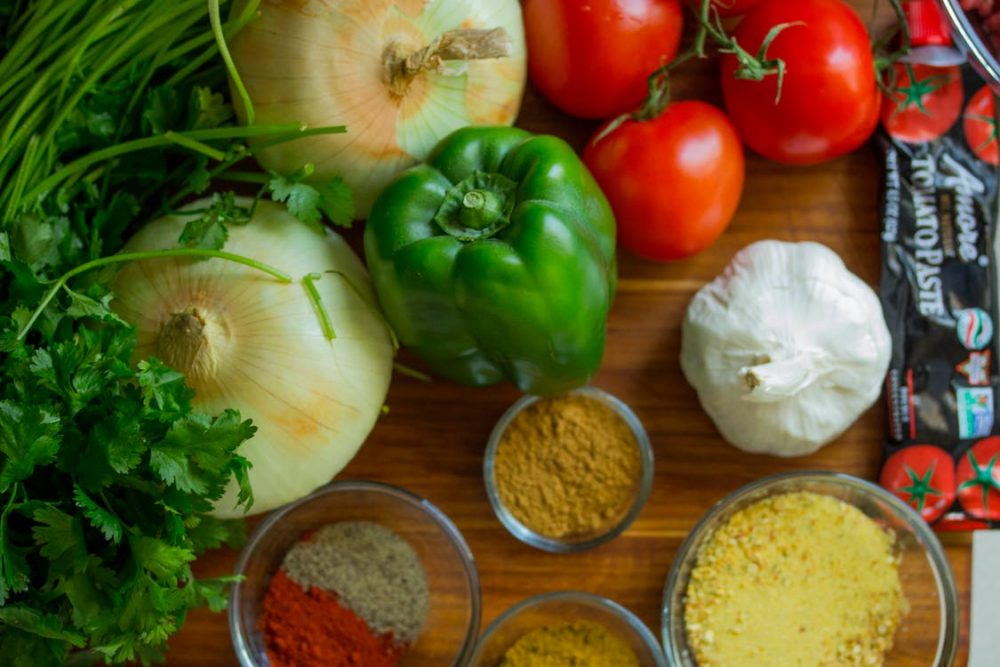
Anti-Inflammatory Diets are fast gaining popularity as the go-to solution for a sustained effort at dieting. The term is actually a collective, referring to any dietary recommendation that is based on wholesome nutrition. Several popular diets fall into the bucket of anti-inflammatory diets, the most popular one being the Mediterranean diet. The Mediterranean diet is probably the one you know: this is by far the most popular.
Most chronic ailments and diseases have inflammation as their root cause. While medicine attempts to treat the symptom as it manifests, anti-inflammatory diets employ sound eating principles, effectively using food itself as medicine to encourage healing within the body. Most diets you have heard of from cultures where the population is a healthy weight, life expectancy is good, lifestyle diseases are not rampant, probably practice eating whole foods.
The anti-inflammatory diet is not a diet per se; it is more a sustainable approach to eating for life that can address the root cause of ailments, aches, and malaise related to aging. Inflammation is nothing the body’s attempt to heal itself from injury (acute inflammation) and irritation (chronic inflammation). Think of any condition that uses acute or chronic as prefixes, and what you have an inflammatory situation in the body. The key principle here is that the eating system is designed to help the body heal itself from within, reversing any and all inflammation resulting from diet, lifestyle, lack of fitness, and other considerations. Some of the popular anti-inflammatory diets are the Zone diet, the Atkins diet, the Mediterranean diet, and now, low carb diets. Diets that focus on whole foods and a healthy disdain for sugar and refined carbs can all be categorized into anti-inflammatory diets.
If you had to sum up anti-inflammatory diets in one line, it would have to be Michael Pollan’s eating principle: Eat food, mostly plants, not too much.
Nutrition in anti-inflammatory diets emphasize the following:
- Green leafy vegetables and crucifers like kale, broccoli, kohlrabi, cauliflower, etc.
- Foods that are high in water content like cucumbers, melons, celery, etc.
- Whole foods: mostly plant foods. Think color. Vegetables and fruits that can be consumed as food without altering them via cooking. Most diets recommend you get your 5-8 servings of veggies and fruits and in a rainbow of colors to derive maximum benefit.
- Foods that are high in anti-oxidants like berries, cherries, grapes, etc.
- Minimize intake of white carbs and refined carbs like bread, pasta, rice, etc., and replace with grains that are high in fiber like millets
- Avoid fried foods
- Learn the difference between omega-3s and omega-6s. Most diets and lifestyles tend to be heavier on the omega-6s, which can lead to inflammation when coupled with an inactive lifestyle. Omega-3s, however, are instrumental in increasing HDL (the good cholesterol) and lowering levels of Omega-6s, which can lead to higher LDL (the bad cholesterol). Where do I find omega-3s, you ask? Mostly in oily fish, and to some extent, nuts and seeds.
- Lean protein – like fish and chicken.
- Good fats – Eggs, nuts, seeds, olive oil, coconut oil, avocados, etc.
- Probiotics like yogurt, kefir, kombucha, etc.
- Spices and condiments: ginger, garlic, turmeric, cumin, coriander, pepper, cinnamon, etc. These aromatic spices that have long been key ingredients in eastern cultures are now gaining popularity as anti-inflammatory components in the western diet. You can use these liberally.
Anti-inflammatory diets offer a host of advantages and have been key in treating everything from metabolic syndrome (insulin resistance, hypercholesterolemia, fatty liver, hypertension) to arthritis and Alzheimer’s. What’s more, eating this way becomes easy and sustainable as the range of food is not as restrictive as with other diets. In a way, these diets encourage your body to let go of baggage that may be keeping you from healing internally.
Starting any diet can be a challenge for most of us. While the anti-inflammatory diet can be seen as a holistic remedy to treat inflammation inside the body, it is always advisable to seek the advice of a nutritionist or your doctor before starting any new diet or lifestyle change. In accordance to your limitations or preferences, your doctor or dietician can recommend ways and means to follow any anti-inflammatory diet that suits you. Please remember to consult especially if you have a chronic condition or illness, are pregnant or breast-feeding, or have any food allergies.
Gandhi Quotes: Preacher for All Ages
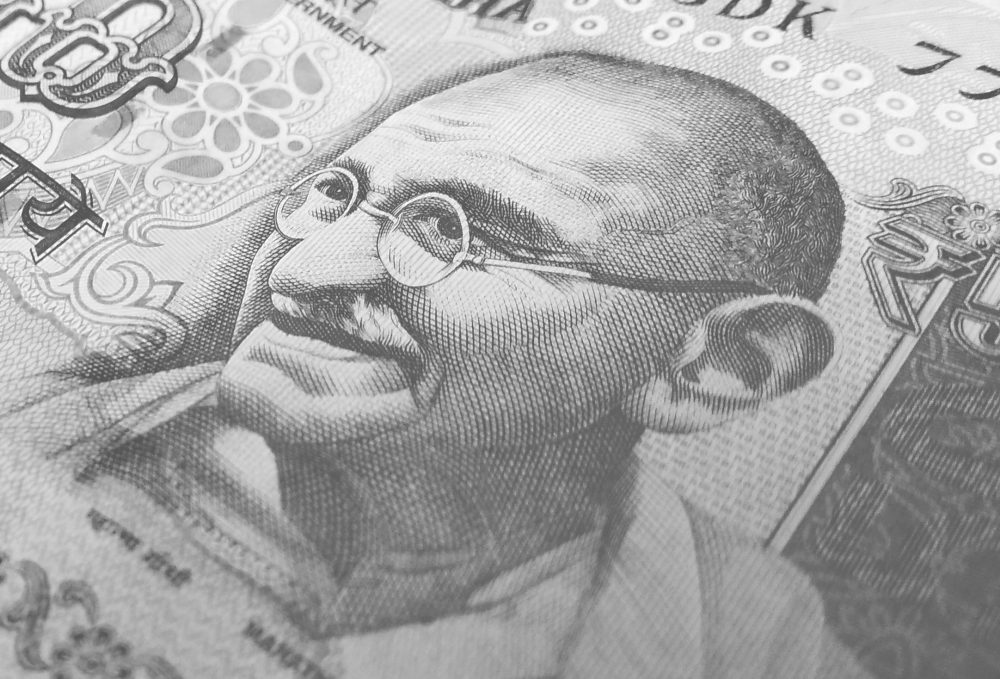
Gandhi is a name that is synonymous with Ahimsa or Non-violence. Known fondly in India as the Father of the Nation, Mohandas Karamchand Gandhi, the gentle giant, was the very personification of “Simple Living, High Thinking”. Vocal that we was in asserting India’s ability to govern itself, and having given his life to practicing the values that he preached, he is a leader who is still revered all over the world. He is one of history’s eminent civil rights leaders. Gandhi was bestowed the honorary title Mahatma (Maha+Atma = Great Soul) and is still remembered as Mahatma Gandhi. Today, his birthday, the 2nd of October, is observed the world over as International Non-violence Day.
If at a crossroads, like wanting to do something but with fear of failure looming over your head, here are some of Gandhi quotes to give you perspective.
- When I admire the wonders of a sunset or the beauty of the moon, my soul expands in the worship of the creator.
- The weak can never forgive. Forgiveness is the attribute of the strong.
- Live as if you were to die tomorrow. Learn as if you were to live forever.
- The best way to find yourself is to lose yourself in the service of others.
- You must be the change you wish to see in the world.
- Prayer is the key of the morning and the bolt of the evening.
- The best way to find yourself is to lose yourself in the service of others.
- Satisfaction lies in the effort, not in the attainment, full effort is full victory.
- A small body of determined spirits fired by an unquenchable faith in their mission can alter the course of history.
- First they ignore you, then they laugh at you, then they fight you, then you win.
- An eye for an eye only ends up making the whole world blind.
- A nation’s culture resides in the hearts and in the soul of its people.
- The seeker after truth should be humbler than the dust. The world crushes the dust under its feet, but the seeker after truth should so humble himself that even the dust could crush him. Only then, and not till then, will he have a glimpse of truth
- A small body of determined spirits fired by an unquenchable faith in their mission can alter the course of history.
- The greatness of a nation can be judged by the way its animals are treated.
- Service which is rendered without joy helps neither the servant nor the served. But all other pleasures and possessions pale into nothingness before service which is rendered in a spirit of joy.
- Always aim at complete harmony of thought and word and deed. Always aim at purifying your thoughts and everything will be well.
- In prayer it is better to have a heart without words than words without a heart.
- Strength does not come from physical capacity. It comes from an indomitable will.
- It is health that is real wealth and not pieces of gold and silver
Here are some quotes by eminent leaders and luminaries of history about Gandhi.
- “I believe that Gandhi’s views were the most enlightened of all the political men in our time. We should strive to do things in his spirit: not to use violence in fighting for our cause, but by non-participation in anything you believe is evil.” — Albert Einstein
- “To other countries, I may go as a tourist but to India I come as a pilgrim… If this age is to survive, it must follow the way of love and nonviolence that [Gandhi] so nobly illustrated in his life. — MLK Jr.
- “Gandhi remained committed to non-violence.” — Nelson Mandela
Do you have a favorite Gandhi quote you would like to share with us? We would love to hear from you.
Prebiotics: Food For Healthy Gut Flora
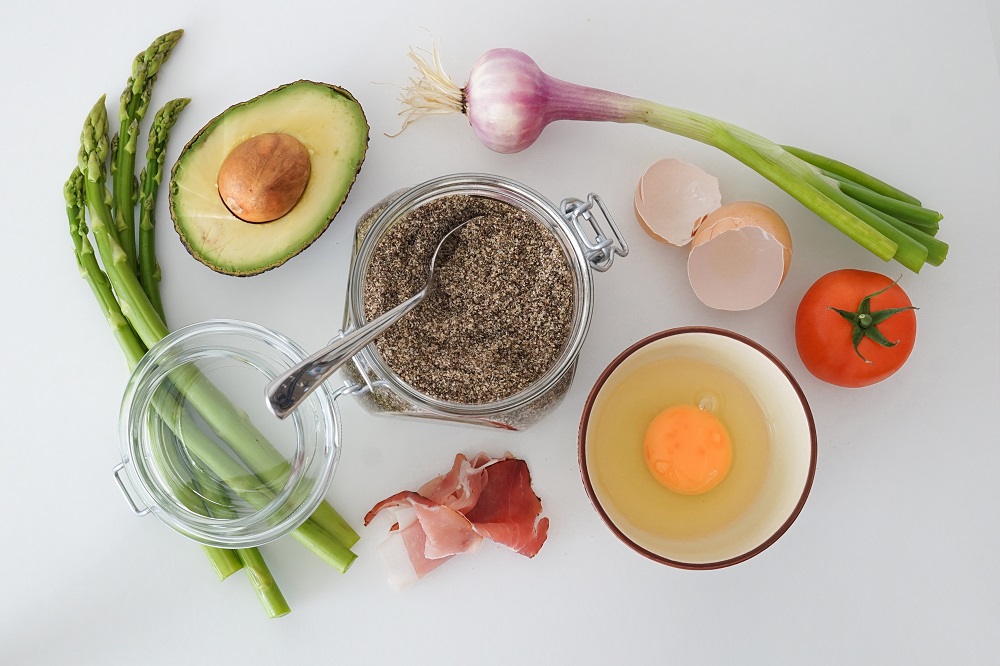
Prebiotics. Hmm. Are you sure you don’t mean probiotics, you might ask. But no. I do mean prebiotics. Probiotics, we know, are mostly fermented products that help increase the diversity and versatility of your gut flora. You know, those beneficial bacteria that live in your digestive system that you don’t see but are very grateful for.
So what are prebiotics? Just apply the same logic to them as you would with “pro-biotics”. Probiotics are pro living microorganisms like bacteria, and pre-biotics are those foods that are food for these helpful microflora. Isn’t that amazing? A kind of a food ecosystem for those friendly bacteria in your belly! That is to say, prebiotics are the foods that allow, nay, help probiotics do their work.
Confused? Let me come at this in a different way. Generally speaking, prebiotics are foods and ingredients that induce the growth of friendly microorganisms in your digestive system. Bacteria and fungi feed on these foods to derive their energy, and then the probiotics that we eat keep them healthy. These are primarily non-digestible fiber (think vegetables) that pass through the upper gastrointestinal tract undigested and are egested out. (I know. Eww.)
Fiber has the rather unenviable task of regulating your digestion, carrying out unwanted cholesterol, and keeping your gut healthy. For centuries, the first principle prescribed when asked to go on a diet is: eat more fiber. Now you know the reason. Of late, resistant starch is also gaining recognitionas a prebiotic food. (Think green bananas, legumes, chia seeds, flax seeds.) To keep those bacteria smiling, nutritionists recommend anywhere between 5-20 grams of prebiotics in your daily diet. For those with good digestive systems, 5-10 grams is the daily recommended intake. But for those with digestive disorders like chronic constipation, the limit is higher.
Here is a list of prebiotic foods that you must incorporate into your lifestyle, whatever your diet.
- Jerusalem Artichokes
- Dandelion greens
- Raw garlic/onion/leek
- Cooked onion
- Asparagus
- Legumes like black beans, kidney beans, garbanzo beans, etc.
- Chia seeds
- Flax seeds
- Raw banana
- Wheat or oat bran
- Whole grains
- Milk (Has a prebiotic called Lactulose)
- Raw Chicory (Get your neighbourhood coffee place to grind some up in your coffee next time.)
- Mung bean
- Raw jicama
- Apples
- Crucifers like cabbage, kale, broccoli, kolrabi, cauliflower, etc.
Adding prebiotics to your diet will help your health improve in various ways. Here are the top four:
- Improved Gut Health: We’ve covered this already. But in case you need more info: stronger intestinal lining. Better electrolyte absorption and regulation. The fiber in these act as binding agents, preventing both constipation and diarrhea. Guard against intestinal conditions like Crohn’s disease and ulcerative colitis. Prevention of and protection from irritable bowel syndrome. Ditto with leaky gut syndrome.
- Boosted Immunity: As digestion improves, your intestinal lining becomes healthier, and the prebiotics carry out bad cholesterol as food exits your system, you begin to develop better immunity against chronic infections. Prebiotics actively act promote healthier pH in the intestines, and are also being researched as a potential prevention mechanism for cancer.
- Anti-inflammatory Benefits: We’ve touched upon the fact that high-fiber foods are essential for their anti-inflammatory properties in another blog post. As inflammation inside the body reduces, your biomarkers improve, lowering your risk of heart disease, arthritis, fatty liver disease, metabolic syndrome, insulin resistance, etc. High fiber foods are anti-obesogenic and help prevent infections caused by inflammation and insulin resistance like candida.
- Nature’s Anti-Depressants: As chronic inflammation improves and digestion improves, so will your skin, hair, and your levels of happy hormones. Prebiotics help in regulating hormones. Think of the last crash you had after a sugar binge. This is the stark opposite of that. An overall sense of well-being, increased awareness of the body, better communication with your body, and improved metabolism all contribute to greater endorphin release. Research now shows that prebiotics have significant impact on neurobiological function, promoting healthier levels of feel-good hormones and reduced levels of cortisol and response to stress in the human body.
You know what they say. Knowledge is power. So the next time you say grace before a meal, reach for the artichoke or asparagus spears or hummus without guilt. And pat your belly and say to the friendly gut flora proliferating in your intestine as you eat: Go forth and multiply.
Cupping Therapy for Pain Management

If you’ve ever been to an acupuncturist, you would have heard of cupping therapy as an add-on or supplementary treatment. Or you will recall Michael Phelps’s purpled back during the previous Olympics.
Cupping Therapy: What is it?
What exactly is it? It is a form of alternative therapy wherein suction cups are placed on various locations on the body, and with the use of a vacuum pump, vacuumed into position. This leads to the skin in that area to get sucked into the vacuum created by the mechanical pump, and this targeted suction leads to your skin and underlying tissue to bulge upwards. This cup is left in place for a few minutes, anywhere between five to fifteen minutes. This localized “bump” induced by cupping is said to be effective in treating pain, internal damage to connective tissue, sore muscles, and swelling. Owing to the pressure exerted in these targeted areas, blood rushes to the spot, as it recognizes this spot as one of some kind of injury.
This flooding of blood to the area is said to carry with it pure blood that helps in dealing with the issue in that area. For example, if you have pain in your trapezium in the shoulder, or have chronic neck pain, cupping applied to these areas is said to be a form of localized therapy to promote healing locally. According to Chinese traditional medicine, cupping is said to induce stagnant blood to move more freely, thereby leading to easier blood (and energy) flow.
The type of cupping therapy factors in different components of the treatment like medium, method, intensity, and materials used. The methodology across all these types is the same: a dry or a wet suction cup is placed onto the area to be treated, and a mechanical pump is used to vacuum seal the cup into position. Materials that may be used are herbal, water, needles, and magnets. Sometimes, a flash of heat is introduced into the cup prior to suction with the help of a ball of cotton soaked in alcohol that is lit and placed inside the cup.
Alternative Medicine and Holistic Health
Cupping therapy is traditional Chinese alternative medicine, and has been practiced for centuries. It has been in use for chronic respiratory ailments like bronchitis and in the treatment of musculoskeletal pain. Alternative medicine or therapy encompasses all such treatment or therapy forms that are unproven by science. But as more and more people are becoming aware of the benefits (sometimes placebo), alternative medicine is gaining mainstream acceptance. Several other treatments you may have heard of include touch therapy or Reiki, hydrotherapy, naturopathic treatments, acupuncture, dry needle therapy, herbal and nutritional supplements, prayer, meditation, chiropractic manipulation, energy healing, etc.
Cupping therapy falls under the larger umbrella term, CAM: Complementary and Alternative Medicine. These therapies have evolved over centuries as a part of the tradition of different cultures that have looked for cures not so much in science as in nature. While there are sceptics with anything that comes with an “alternative” tag, these systems have been practiced for centuries with varying degrees of success.
Caution and Considerations
As the practice of cupping usually leaves behind a mild hematoma, it is better to be safe than sorry. This is especially so if you have an underlying chronic condition like diabetes or high blood pressure. If pregnant or breast feeding, please inform your practitioner. Cosmetically, you will have to live with the blood clots/skin markings that take a short while to clear up. However, ungainly that they might be, these discolorations and surface bruises are mild, mostly painless and clear up all on their own.
If opting for flash or fire cupping, exercise great care and choose your therapist wisely. Practically, since these cups are used on softer tissue, and the skin is lubricated most of the time prior to the application of the suction cup, all you will be left with is mild bruising, and hopefully, with lesser pain than before. Ancient therapies have long been popular, and cupping therapy doesn’t look like it’s going to go away any time soon.
Failure Quotes To Give You Perspective When You Need It

Failure as a topic is everywhere nowadays, especially in the digital era. Click on any website today and odds are you will see a quote that gives you perspective. Someone will have posted the picture of the sun rising on your Facebook feed. On LinkedIn, you will see a quote by someone hugely encouraging to go try something new, and not to box yourself into a career option just to make money. On Twitter, amid the onslaught of scary information and news, you will see a cute cat GIF or just a feel good video that makes you feel like you can do anything. But it is okay to fail– really.
Failure is common. Whenever we attempt something new, chances are we will fail several times at it before we get the desired result. Starting a new diet? A cinnamon roll or a cheese Danish will call your name on day 3. A new exercise routine? Your sore muscles will complain or the chill of the morning will keep you in bed and become the perfect excuse to give that day’s workout a miss. A new job? You have to learn new skills: people skills, work skills, negotiating skills, networking skills, communication skills – as you adjust to a new environment, and there might be a gaffe or two in that adjustment period that makes you feel like a complete and utter failure. Taking a sabbatical from work? As you watch your bank savings dwindle, you might begin to question if your grand reinvention plan was actually a failure. Persistence is often the key to overcoming failure. Remember, JK Rowling began writing Harry Potter on a napkin.
But don’t worry. Failure is nothing to be ashamed of, or scared of. The path to success is littered with failure, as you will see from the quotes of these eminent people who trod this path, encountered failure along the way, but kept on going until they reached their target of success. Here are some great quotes to get you to keep on keeping on when the feeling of failure rears its ugly head. Like Thomas Edison once quipped: “I have not failed. I have just found 10,000 ways that don’t work.”
- “Success is not final, failure is not fatal: it is the courage to continue that counts.” – Winston Churchill
- “Many of life’s failures are people who did not realize how close they were to success when they gave up.” – Thomas A. Edison
- “Remember your dreams and fight for them. You must know what you want from life. There is just one thing that makes your dream become impossible: the fear of failure.” – Paulo Coelho
- “Far better is it to dare mighty things, to win glorious triumphs, even though checkered by failure… than to rank with those poor spirits who neither enjoy nor suffer much, because they live in a gray twilight that knows not victory nor defeat.” – Theodore Roosevelt
- “It’s failure that gives you the proper perspective on success.” – Ellen DeGeneres
- “The only real mistake is the one from which we learn nothing.” – Henry Ford
- “It’s not how far you fall, but how high you bounce that counts.” – Zig Ziglar
- “Winners are not afraid of losing. But losers are. Failure is part of the process of success. People who avoid failure also avoid success.” – Robert T. Kiyosaki
- “If you don’t try at anything, you can’t fail… it takes back bone to lead the life you want” – Richard Yates
- “Everything you want is on the other side of fear.” – Jack Canfield
- “You may encounter many defeats, but you must not be defeated. In fact, it may be necessary to encounter the defeats, so you can know who you are, what you can rise from, how you can still come out of it.” – Maya Angelou
- “Only those who dare to fail greatly can ever achieve greatly.” – Robert Kennedy
- “I have failed many times, and that’s why I am a success.” – Michael Jordan
- “Failure is a bend in the road, not the end of the road. Learn from failure and keep moving forward.” – Roy T. Bennett
- “Try again. Fail again. Fail Better.” – Samuel Beckett
So the next time you feel like you’ve failed at something, and you need a fillip, bookmark this page. And come back to it as many times as you need.
